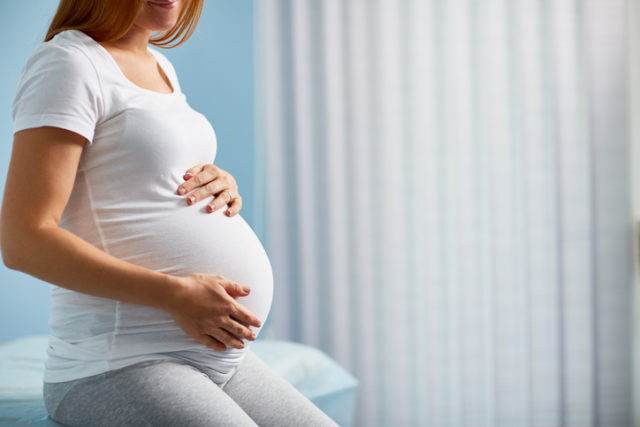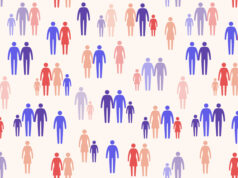
The global population has grown to nearly 8 billion people, an enormous increase from 1.6 billion people in 1900. Despite periodic wars, famine and disease, child and adult mortality rates have plummeted as a result of improved medical treatments, sanitation and food sources. Yet over the past 70 years, population growth has slowed considerably.
Many nations have witnessed a staggering birth rate decline. In 1900, U.S. women gave birth to an average of 3.9 children; in 2020 that average dropped to 1.8 children. United Nations population data revealed the annual global population growth rate was 1% in 2020, down from 2.1% in 1960. The rate is projected to drop to 0.1% by 2100. When the birth rate drops persistently below the death rate, population decline is inevitable.
For the many nations facing population decline, this poses a host of problems with no obvious solution. Technology entrepreneur Elon Musk believes that “population collapse is potentially the greatest risk to the future of civilization.”
First, a brief history lesson is in order. In an agrarian society, children are a reliable labor force and economic asset. As 19th-century Europe and America transitioned from an agrarian to an industrialized society, children became an economic liability. Improved educational opportunities, particularly for women, allowed them to assume their rightful place in the workforce. Urbanization led to increased costs of food, childcare and housing, and forced many women and couples to delay or forgo family building. Enhanced contraception provided long-deserved reproductive choice.
The total fertility rate (TFR), a measure of a population’s expected number of births, fell from 1950 until the present as life expectancy increased. Over the past decade, birth rates have declined for teenagers and women ages 20 to 30, remained stable for women 30 to 35, and increased for women over 35. In 2020, the TFR of the United States reached a record low. With fewer than 2,100 births per 1,000 women, the birth rate is too low for the population to replace itself. The declining TFR was observed among all racial groups.
Regional differences are stark. The TFR is higher in western states such as Texas and Arizona than in northeastern states, perhaps due to climate preference and a lower cost of living. Demographers have noted higher fertility rates in states that traditionally vote Republican in national elections, leading some to question whether regional differences in fertility rates will influence political outcomes.
Overseas, population decline is ominous. Spain has a life expectancy of 82.5 years and only 1.35 births per woman. The Spanish government projects a loss of 5.6 million people by 2080, threatening the national economy and social welfare system. Births declined by the millions over the past two decades in China, where it is expected that by 2040 nearly one-third of the population will be 60 or older.
In Japan, a 25% reduction in the national population is expected over the next three decades, a loss of more than 30 million people. Japan also faces a peculiar rise in voluntary celibacy and disinterest in relationships. South Korea’s birth rate plummeted from 4.3 to 1.1 births per woman from 1971 to 2021, nearly a 75% drop in four decades. Now Koreans aged 55 and older must remain in the workforce longer to compensate for the loss of young laborers.
This phenomenon may already be in motion in the United States. According to Lyman Stone of the American Enterprise Institute, a public policy think tank, national polls indicate that American women are having fewer children than they originally intended.
Depopulation places an enormous burden on a nation’s workforce, as fewer workers are available to support an increasing number of seniors. As the senior population increases, healthcare expenditures will continue to skyrocket.
The need to fund the increasing cost of healthcare and social services will result in tax increases that diminish household incomes. According to economist Richard Easterlin, aspirations and expected income influence fertility decisions. If aspirations remain high but expected income declines, fertility can be expected to fall further.
To address declining birth rates, many nations have adopted pro-natalist policies: monetary compensation for childbearing, extended paid maternity and paternity leaves, flexible work hours, and significant workflow adaptations such as work-from-home arrangements and on-site childcare. While America’s recently revised Child Tax Credit provides subsidies to families for the expressed goal of reducing poverty, these subsidies might provide security to parents desiring to have two or more children. Needy families paying federal income taxes receive $3,600 per child younger than 6, and $3,000 per child aged 7 to 17. Families will receive a discount in federal income taxes for each child they have.
Pro-natalist strategies abound around the globe, but have yet to significantly combat the declining birth rate. A more practical strategy might be to promote reproduction on an individual level, emphasizing fertility benefits through private-sector employers rather than public policy.
Both the quantity and the genetic quality of a woman’s eggs decline significantly with age, leading to a marked reduction in reproductive success as women approach their mid-30s. Women planning to freeze eggs for future reproduction are wise to do so when their eggs are both plentiful and genetically normal.
Technological improvements in egg freezing have resulted in vastly improved pregnancy rates over the past 15 years. While some women freeze eggs prior to chemotherapy, ovarian surgery or for other medical indications, others freeze to delay childbearing for social or economic reasons. Egg freezing offers autonomy to women who wish to remain actively invested in their careers, yet maintain the ability to have children when prepared to do so.
The term “elective” egg freezing, often used to refer to non-medical egg freezing, is both insensitive and invalid. It presumes incorrectly that every woman has the necessary social and financial resources to start a family during her most fertile years. Egg freezing is a necessity for many women, as it might be their only reasonable option to have biological children.
Traditionally, any procedure deemed “elective” has been inaccessible through employer-sponsored health plans in the United States. Already, however, fertility benefits are expanding beyond traditional boundaries. Companies like Facebook, Google, Apple, Salesforce, Cisco and Goldman Sachs offer fertility preservation options to keep female employees fully engaged, thereby safeguarding productivity.
Egg freezing might be a reliable pathway to national—and global—change. Declining birth rates place an unsustainable burden on a diminishing workforce. Women are affected disproportionately as increased professional demands often interfere with their family-building plans.
Effective pro-natalist policies are essential to allow women to optimize their career and motherhood plans. These pro-natalist policies continue to evolve with the potential to reduce the global momentum of declining births. In the meantime, the reality is that egg freezing is for many women not only an option but a necessity.
Photo: shironosov, Getty Images








